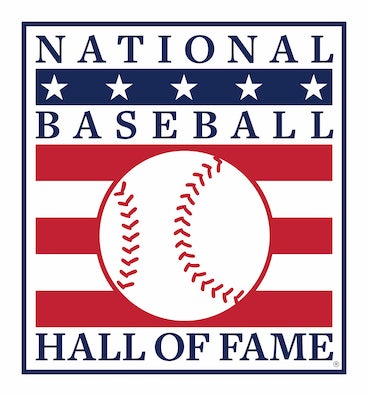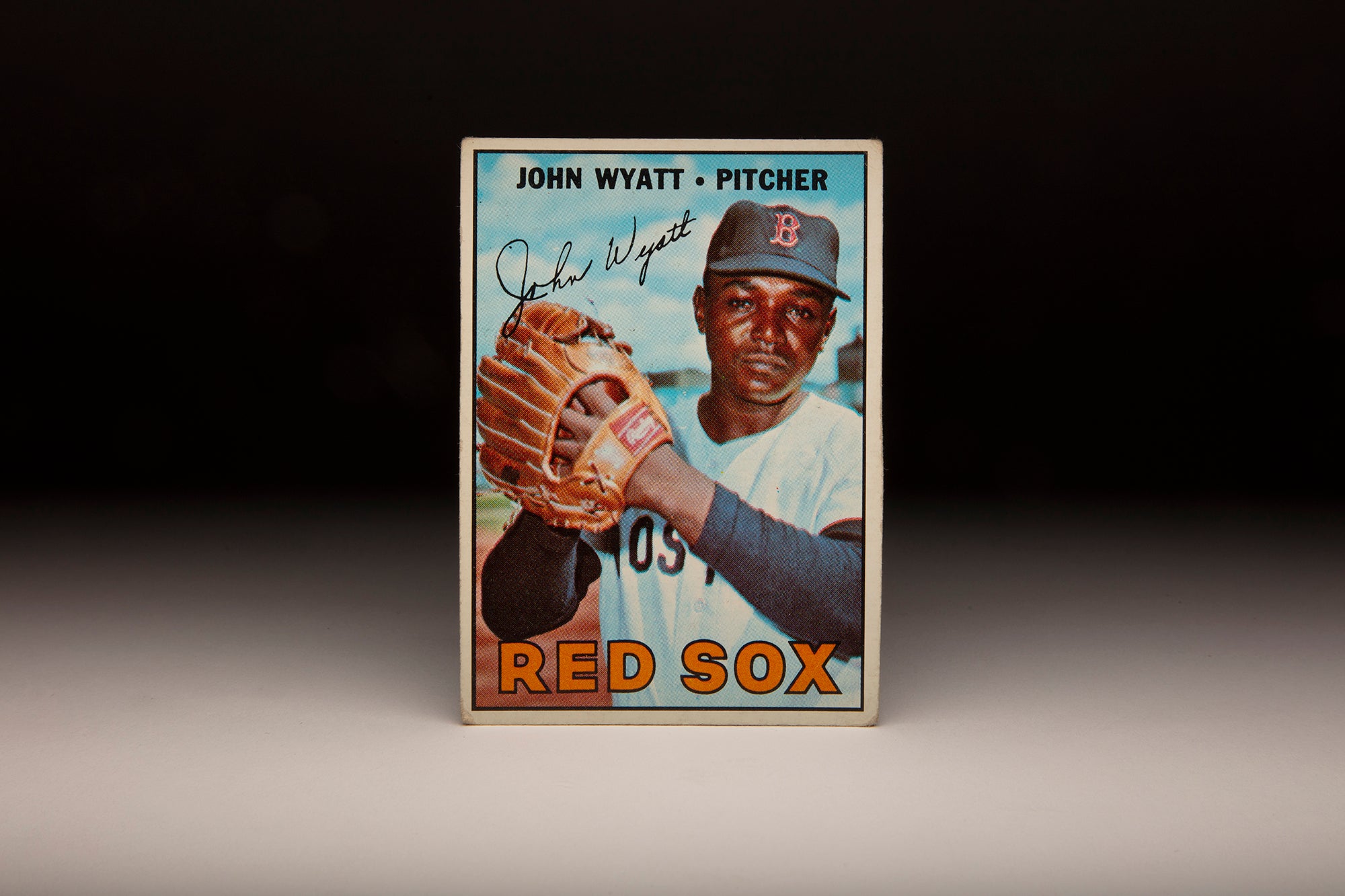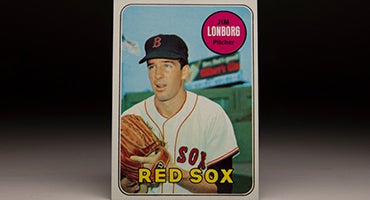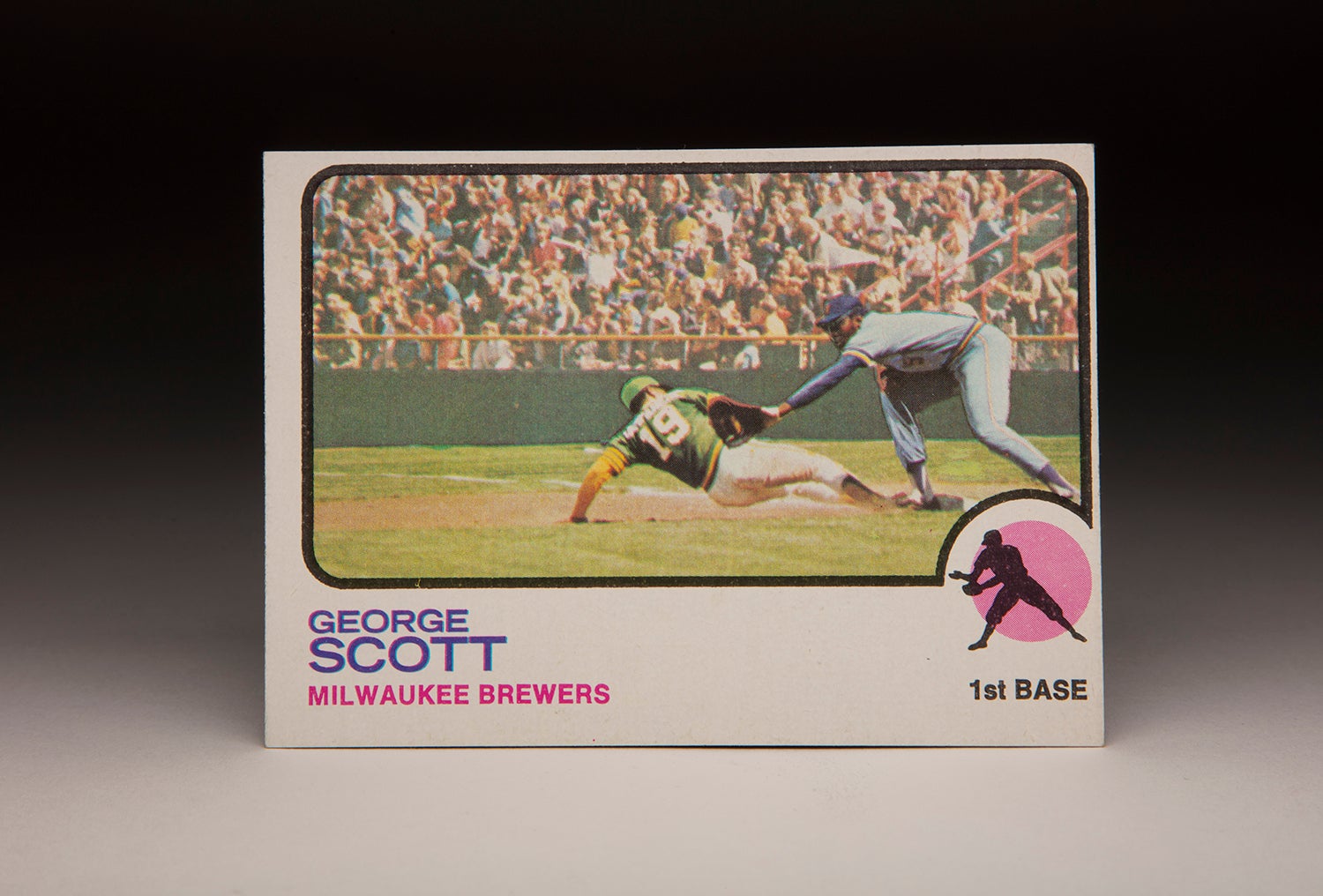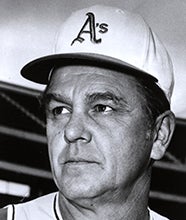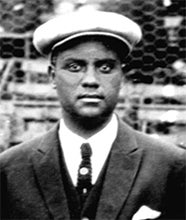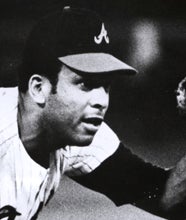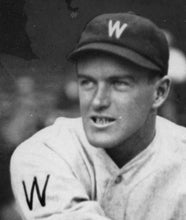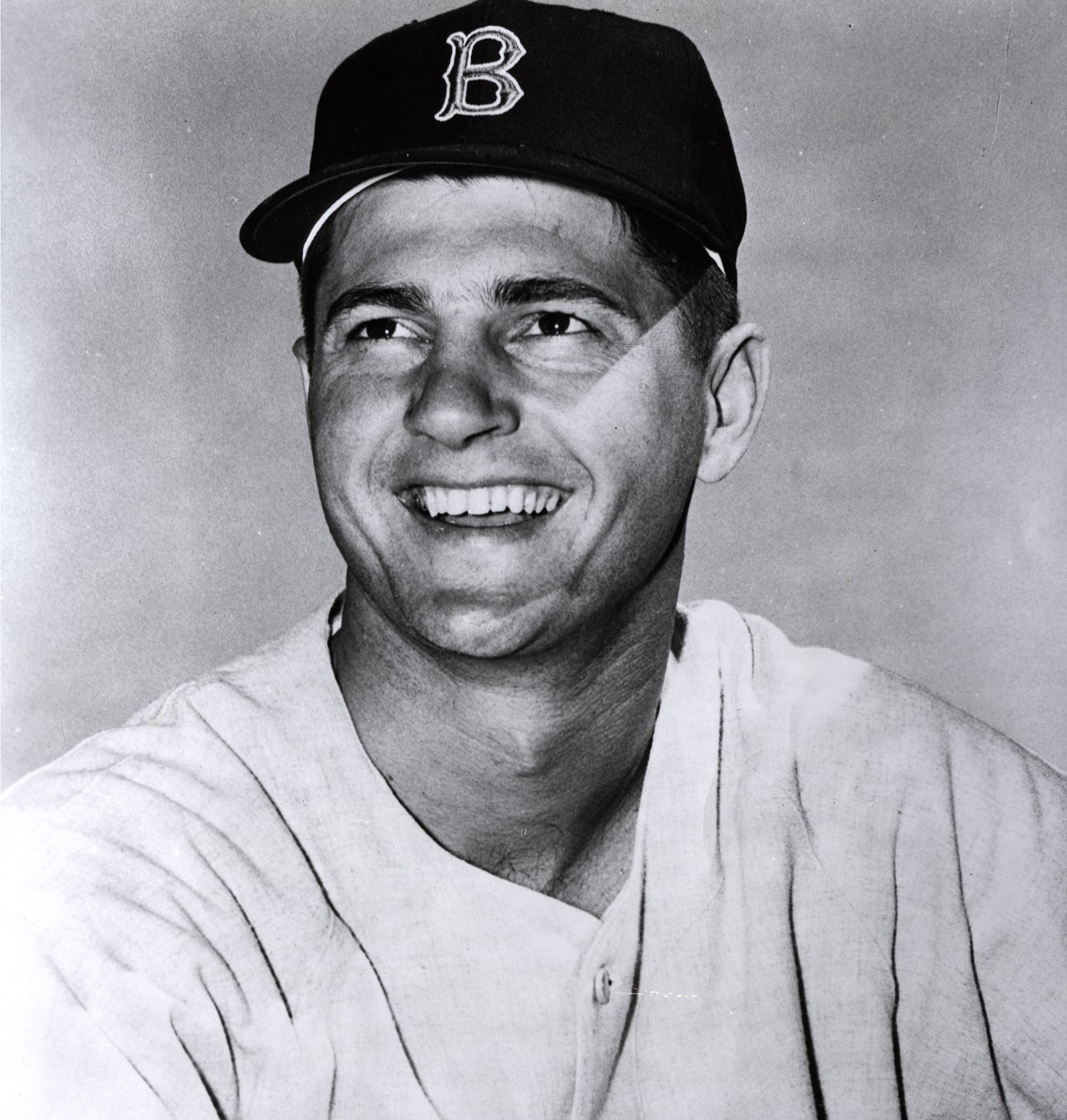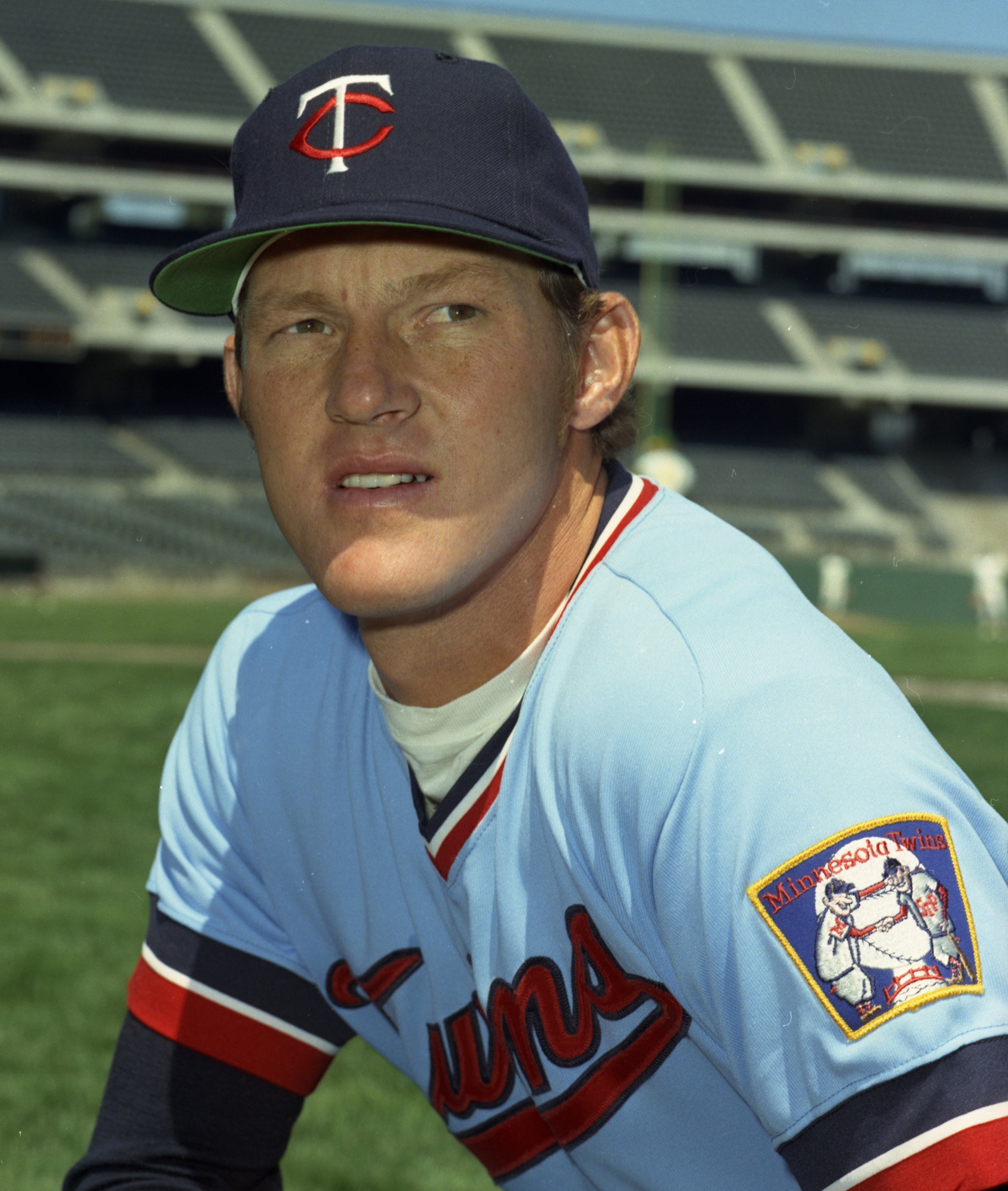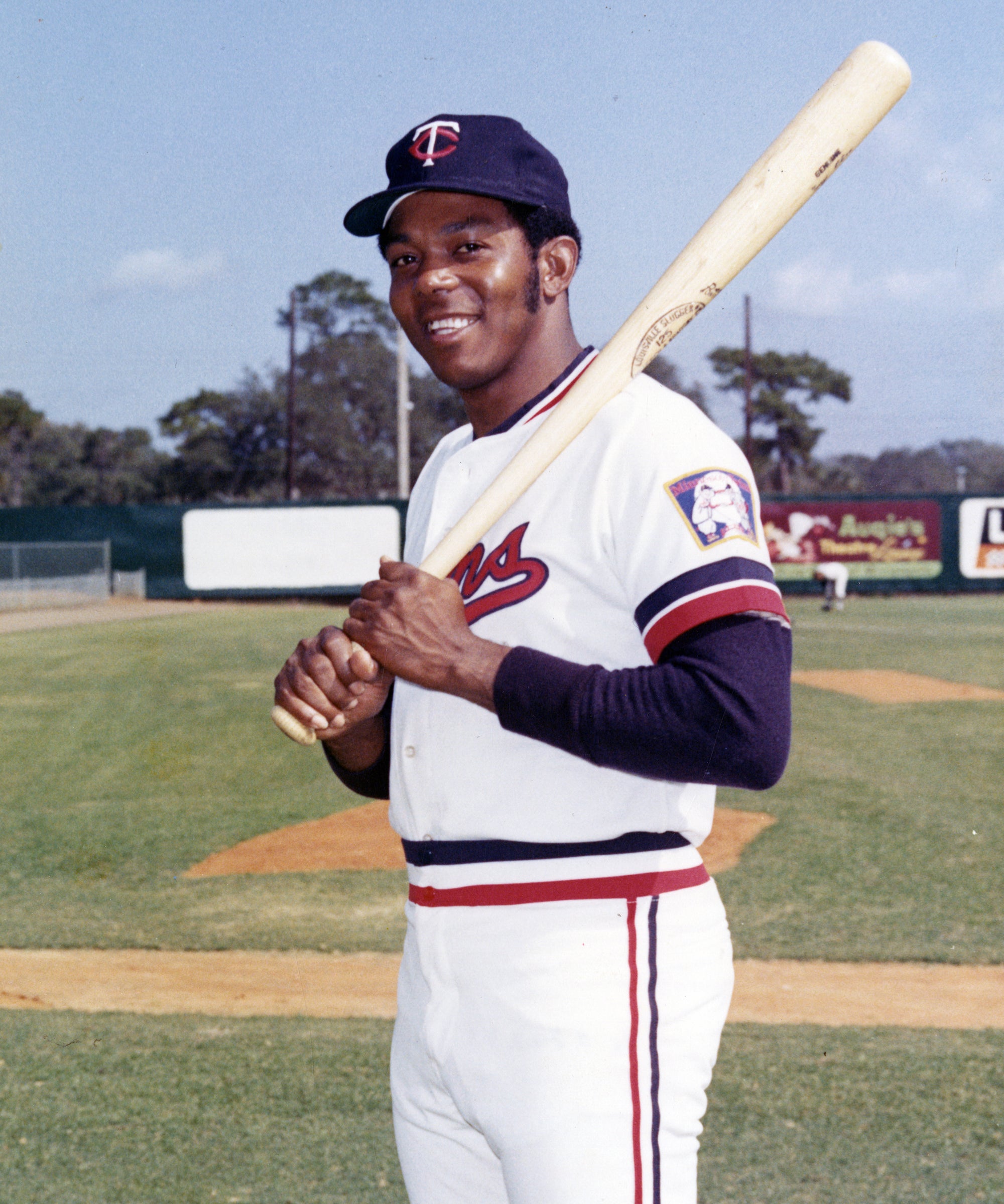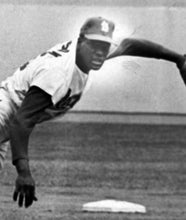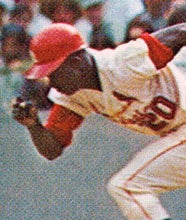- Home
- Our Stories
- #CardCorner: 1970 Topps José Santiago
#CardCorner: 1970 Topps José Santiago
With his club facing elimination in the next-to-the-last game of the 1967 regular season, Red Sox manager Dick Williams had a decision to make.
Boston was one game behind the first-place Minnesota Twins, and the teams were set to meet in a two-game series at Fenway Park to end the season. Jim Lonborg, who carried Boston all year with a campaign that would eventually result in an AL Cy Young Award, was not an option after starting two days earlier against Cleveland but would be available in the finale.
To make that game matter, Williams had to find a win from a pitching staff that was plagued by injuries and inexperience. Enter José Santiago, who had been an effective swingman all season and had posted three wins in a six-game stretch from Sept. 18-22.
Seven innings later, Santiago left the Fenway Park mound to a standing ovation and picked up the win in Boston’s 6-4 victory. Lonborg won his start the next day to send Boston to the World Series, where Santiago would become the first Latin American pitcher to start Game 1 of the Fall Classic.
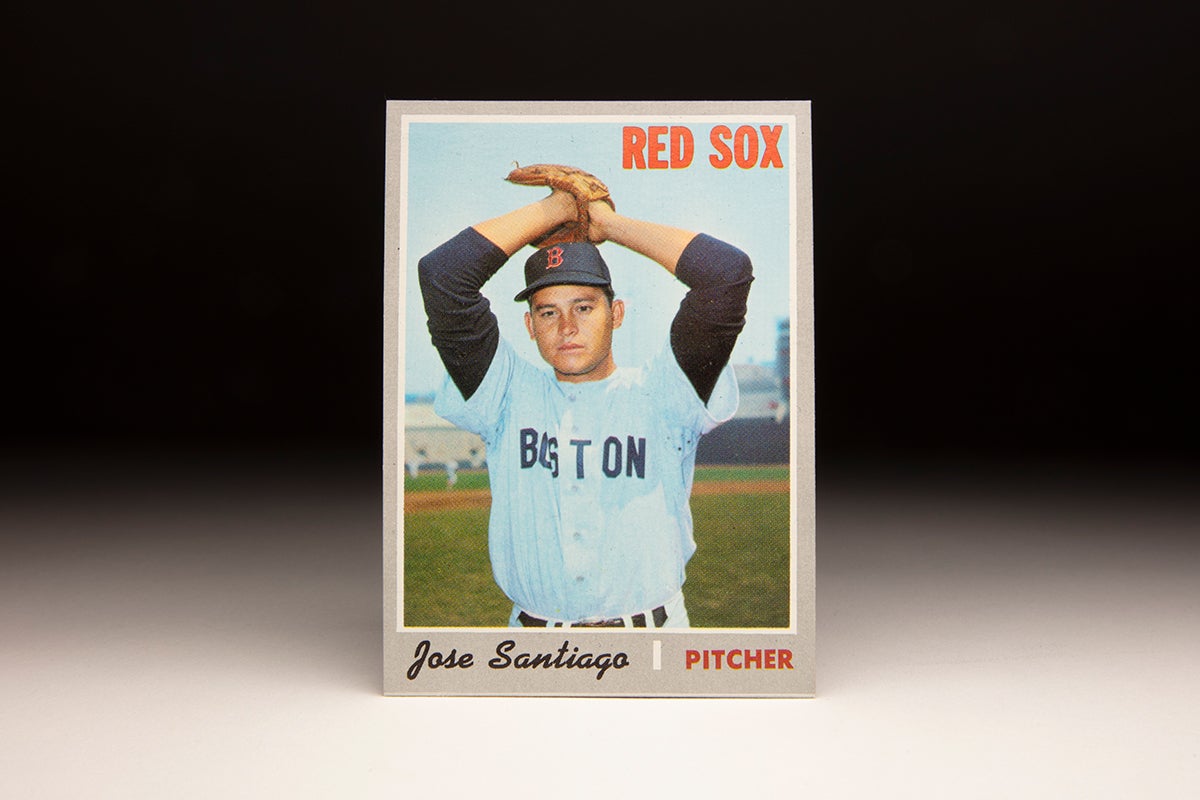
Born Aug. 15, 1940, in Juana Diaz, Puerto Rico, José Rafael Santiago was a high school outfielder who transitioned to the mound thanks to his live right arm. He starred at Santa Maria Catholic University in Ponce and caught the eye of Alex Pompez, the legendary scout for the Giants who was elected to the Hall of Fame in 2006.
Pompez promised Santiago a bonus and sent him to Giants camp in Melbourne, Fla., where he befriended Orlando Cepeda, who then was a highly touted prospect. But Santiago said the Giants failed to deliver on their promise.
“They wouldn’t even give me $1,000,” Santiago told the North American Newspaper Alliance during the 1967 World Series.
Santiago returned to Puerto Rico – but not before Cepeda gave him some encouragement.
“You’ll make it in the big leagues,” Santiago remembered Cepeda telling him. “You’ll make it somewhere.”
Cepeda recognized that despite Santiago’s small stature, he possessed a big league arm.
“He used to be so skinny,” Cepeda recalled in 1967, “that the fans used to call him ‘palillo.’ That means ‘toothpick.’”
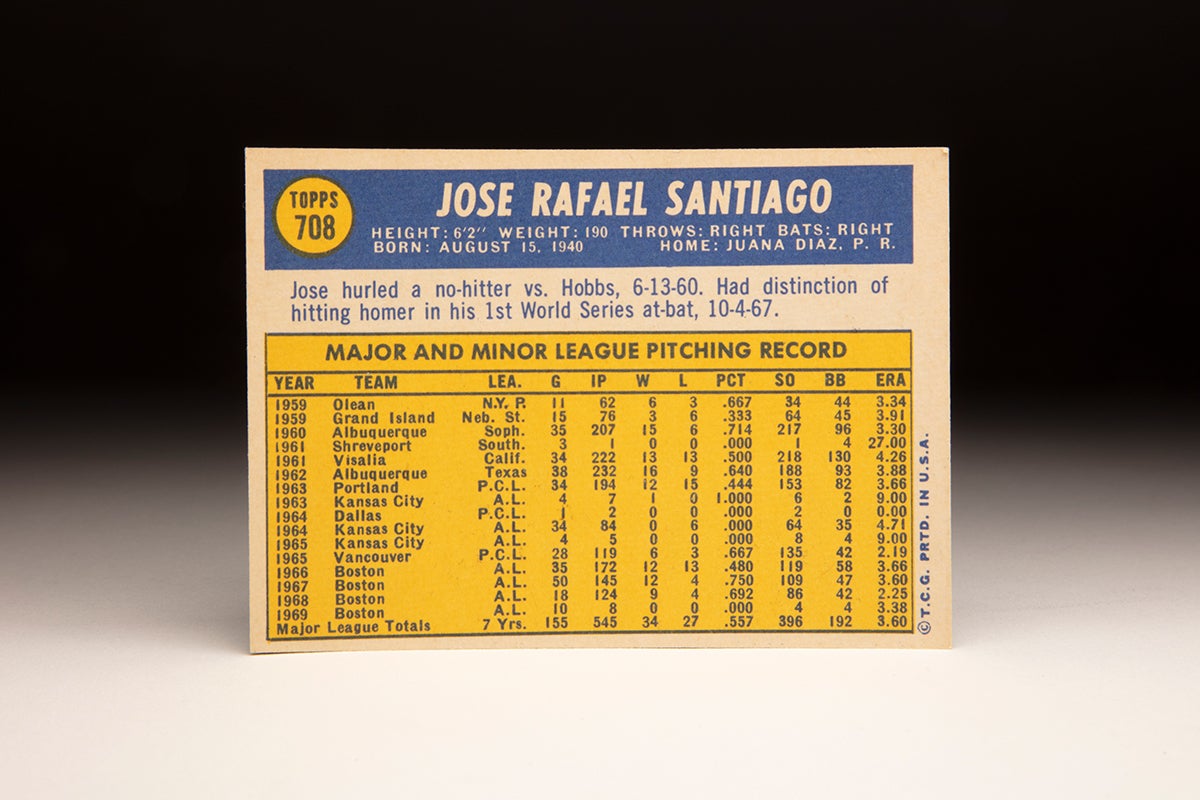
Back in Puerto Rico, Santiago was spotted by a scout from the Kansas City Athletics. He signed prior to the 1959 season and pitched for two Class D teams that season: Grand Island of the Nebraska State League and Olean of the New York-Penn League. For the season, Santiago was 9-9 with a 3.65 ERA walking 89 while striking out 98 in 138 innings.
Santiago pitched for Class D Albuquerque in 1960, striking out 217 batters in 207 innings while going 15-6 and throwing a no-hitter against the Hobbs Pirates. He spent most of the 1961 season with Class C Visalia of the California League, going 13-13 with 218 strikeouts in 222 innings.
Then in 1962, Santiago returned to Albuquerque, which by this time was a Double-A outpost. He went 16-9 with a 3.88 earned-run average that year – leading the Texas League in victories and finishing third in ERA. Following the season, Santiago reached double digits in victories in the Puerto Rican Winter League.
In 1963, Santiago was promoted to Triple-A Portland and started the Pacific Coast League All-Star Game for the PCL All-Stars vs. Spokane, pitching three scoreless innings. He was 12-15 with a 3.66 ERA – despite a bout with appendicitis – when he was promoted to Kansas City in September, appearing in four games for the Athletics during a season where the A’s went 73-89. He picked up his first win in his big league debut on Sept. 9 when he worked a scoreless inning against the Yankees.
Santiago seemed poised to break camp with the Athletics in 1964 before suffering a severely sprained ankle while running the bases in an exhibition game against the Cardinals on March 25. The injury sidelined him for more than a month before he returned for one game with Triple-A Dallas. On June 1, the A’s brought Santiago back to Kansas City, where he remained the rest of the season. Pitching in 34 games – including eight starts – Santiago was 0-6 with a 4.73 ERA.
He began the 1965 season with the Athletics but was sent to Triple-A Vancouver after just four appearances. With the Mounties, however, Santiago found his form and went 6-3 with a 2.19 ERA over 119 innings. The A’s, meanwhile, lost 103 games in a season where Haywood Sullivan replaced Mel McGaha early in the campaign.
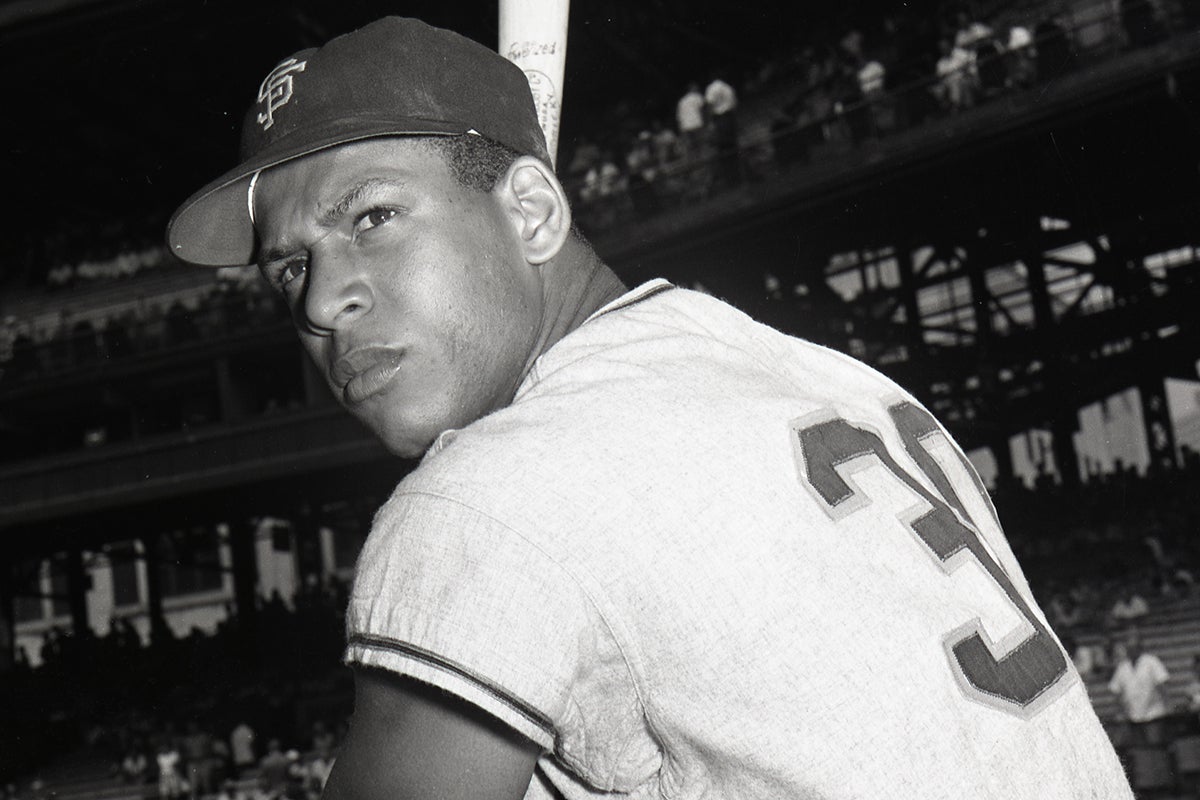
Sullivan joined the Red Sox front office after the season, and on Oct. 15, 1965, Santiago’s contract was purchased by Boston on the strength of Sullivan’s recommendation. In less than two years, Santiago would find himself pitching in the World Series – what seemed like an Impossible Dream for a pitcher with a 1-6 record over three big league seasons and a Red Sox team that finished 62-100 in 1965.
In the spring of 1966, Santiago quickly impressed former Red Sox manager and general manager Joe Cronin, who was then the American League president.
“Anyone with a curve as good as his has to be tough,” Cronin told United Press International about Santiago.
But it was a cut fastball – taught to him by Red Sox pitching coach Sal Maglie – that helped Santiago solidify a spot on the Red Sox in 1966.
“(Maglie) taught me to turn my fastball over,” Santiago told UPI. “This makes it sink or tail away or it sails. I’ve always been a breaking ball pitcher but this change in my fastball should help me.”
Santiago began the 1966 season in the bullpen but moved into the rotation in May. He recorded his first complete game and shutout on May 20 against Kansas City, shutting out the A’s on two hits. He finished the season with a 12-13 record and 3.66 ERA over 172 innings.
The Red Sox, however, finished in ninth place in the 10-team American League in 1966, prompting owner Tom Yawkey to bring in rookie manager Dick Williams in 1967. Santiago immediately impressed Williams with a strong spring.
“I thought Jose pitched as well as anyone in our games so far,” Williams told UPI after Santiago’s three perfect innings vs. the White Sox on March 14.
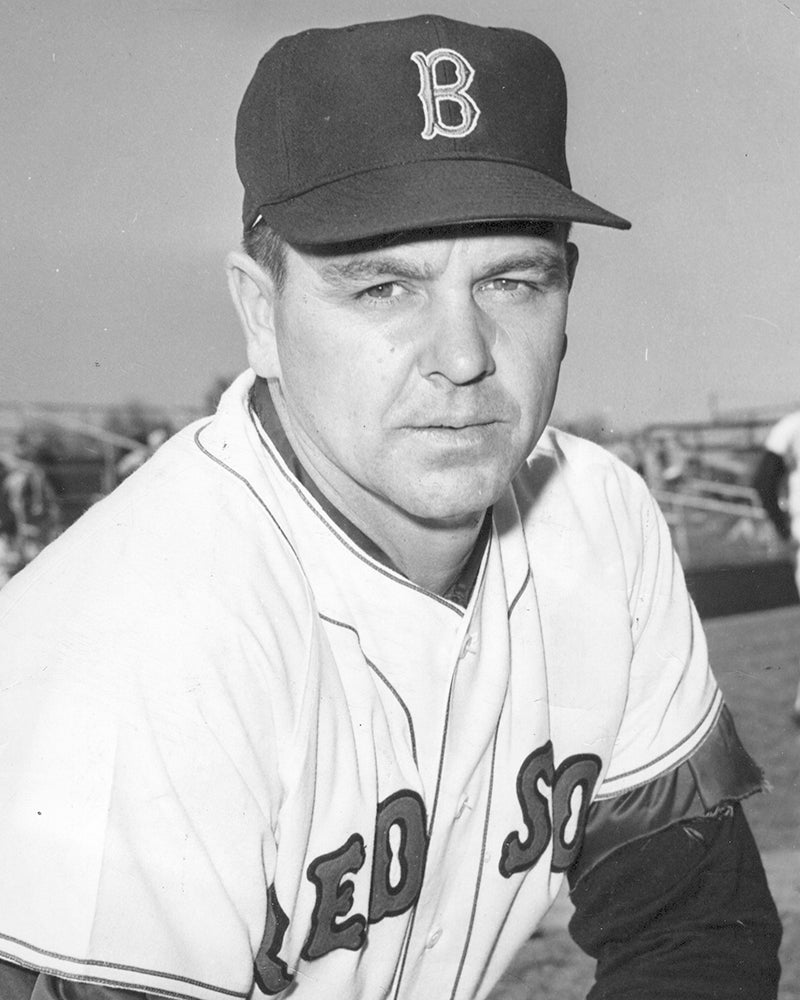
Santiago once again began the season in the bullpen before quickly returning to the rotation. But by June, Williams had moved Santiago into the stopper’s role in the bullpen. He did not start a game in June or July while Boston began stringing together wins on the strength of legendary seasons by Lonborg and Carl Yastrzemski.
From July 14-23, the Red Sox reeled off 10 straight wins to thrust themselves into the pennant race. Santiago was credited with two of those victories, leaving him with a 6-4 record and four saves. The White Sox, Twins, Tigers and Red Sox battled throughout the rest of the summer in one of the great pennant races in AL history, with the latter three teams each entering the season’s final weekend with a chance to advance to the World Series.
On Saturday, Sept. 30, Santiago drew the starting assignment against Minnesota’s Jim Kaat, who had already won seven games that September while tossing six complete games. A Twins victory would eliminate the Red Sox, and Tony Oliva gave Minnesota a 1-0 lead in the top of the first with an RBI single. But Santiago escaped without further damage despite three hits and a walk in that inning.
Kaat, meanwhile, shut out Boston in the first two innings. But with Santiago at the plate to lead off the bottom of the third, Kaat suffered an injury to his left elbow.
“I threw a pitch, and it was like I was hit in the funny bone,” Kaat told the Canton (Ohio) Repository in 2007. “The elbow was vibrating. I shook it off. The next pitch, it went up there like a slow-pitch softball.”
Jim Perry replaced Kaat on the mound during Santiago’s at-bat, which ended in a strikeout. Santiago, meanwhile, worked around a one-out triple by Ted Uhlaender in the fourth inning and was still trailing 1-0 in the bottom of the fifth when Boston rallied for two runs off Perry.
The Twins tied the score in the top of the sixth on a Rich Reese RBI single but Santiago again limited the damage by getting Zoilo Versalles to pop out with the bases loaded to end the frame.
George Scott then greeted Twins reliever Ron Kline with a leadoff home run in the bottom of the sixth, and Santiago retired the Twins in order in the seventh before Boston added three runs in the last of the seventh on a three-run homer by Yastrzemski.
Santiago walked Bob Allison to lead off the eighth, prompting Williams to summon Gary Bell from the bullpen. Santiago left the game to raucous cheers from the 32,909 fans crammed into Fenway Park.
Bell allowed two runs in the ninth but preserved Boston’s 6-4 win over the final two innings.
“No pitcher wants to come out,” Santiago told the Hartford Courant. “I told our trainer that I was getting a little tired and when Dick came out I wish he hadn’t but I said to myself: ‘It’s foolish trying to be a hero.’”
Lonborg and Yastrzemski would wear the hero capes the following day as Boston beat Minnesota 5-3 which – combined with a Detroit split of a doubleheader against the Angels – gave the Red Sox the pennant.
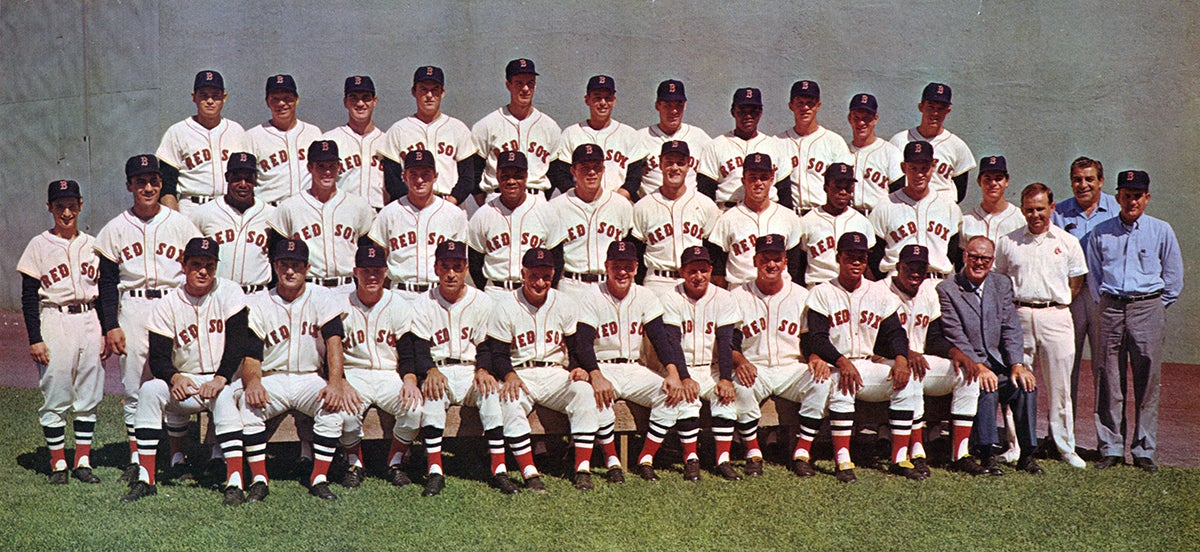
Santiago finished the season with a 12-4 record (good for an MLB-leading .750 winning percentage), five saves and 109 strikeouts in 145.1 innings. But Santiago and his teammates didn’t have much time to celebrate. With just two off days between the final game of the regular season and the start of the World Series, the Red Sox had to quickly refocus to face the National League champion Cardinals and their ace Bob Gibson, who pitched two complete games (and another where he went eight innings) in his previous trip to the Fall Classic in 1964.
And Gibson would be working with a full four days’ rest in Game 1, double what he had in Game 7 of the 1964 World Series when he worked nine innings to defeat the Yankees and wrap up the title for St. Louis.
Santiago gave Williams and the Red Sox everything he had in Game 1, working around trouble in both the first and second innings. But in the third, Lou Brock led off with a single – his second of four hits off Santiago that day – advanced to third on a Curt Flood double and scored on a ground out by Roger Maris. Santiago retired Orlando Cepeda and Mike Shannon to minimize the damage before shocking the baseball world in the bottom of the third with a home run off Gibson.
It was one of only two big league home runs hit by Santiago – the other coming off another soon-to-be World Series hero, Mickey Lolich, earlier in the 1967 season.
The game remained tied until the top of the seventh when Brock singled, stole second, went to third on a Flood grounder to first and scored on a Maris grounder to second. The Red Sox put a runner on base against Gibson in the seventh, eighth and ninth innings but could not score in what became a 2-1 St. Louis win. Santiago allowed 10 hits and three walks over seven innings but gave Boston the opportunity it needed.
“Jose Santiago pitched both Orlando Cepeda (who would be voted the unanimous NL Most Valuable Player following the season) and Lou Brock according to the book,” Williams told UPI following Game 1. “With Cepeda (who went 0-for-4), it worked out great and he got him out every time. But as for Brock, he hit everything.”
Santiago’s strategy – jamming hitters before going low and outside – might have resulted in a victory against anybody else except Gibson, who struck out 10 batters in his complete game effort. But by Santiago’s next start, the Cardinals’ batters had figured out the pattern.
Lonborg won Game 2 before St. Louis took Game 3, setting up a Santiago vs. Gibson rematch in Game 4. This time, the Cardinals scored four runs in the first frame, knocking Santiago out of the game when light-hitting Dal Maxvill singled home the fourth run.
St. Louis went on to win 6-0 to take control of the series with a 3-games-to-1 advantage. Boston won Game 5 behind Lonborg and captured Game 6 to set up a winner-take-all finale. But with Gibson working on three days’ rest in Game 7, the task was monumental. Williams bypassed Santiago and went with Lonborg on two days’ rest.
“I was praying for one more miracle,” Williams wrote in his book “No More Mr. Nice Guy” in 1990. “I didn’t get it.”
Lonborg left the game after six innings with the score 7-1, and Santiago pitched scoreless frames in the seventh and eighth in relief. The Cardinals won 7-2 as Gibson threw his third complete game of the series.
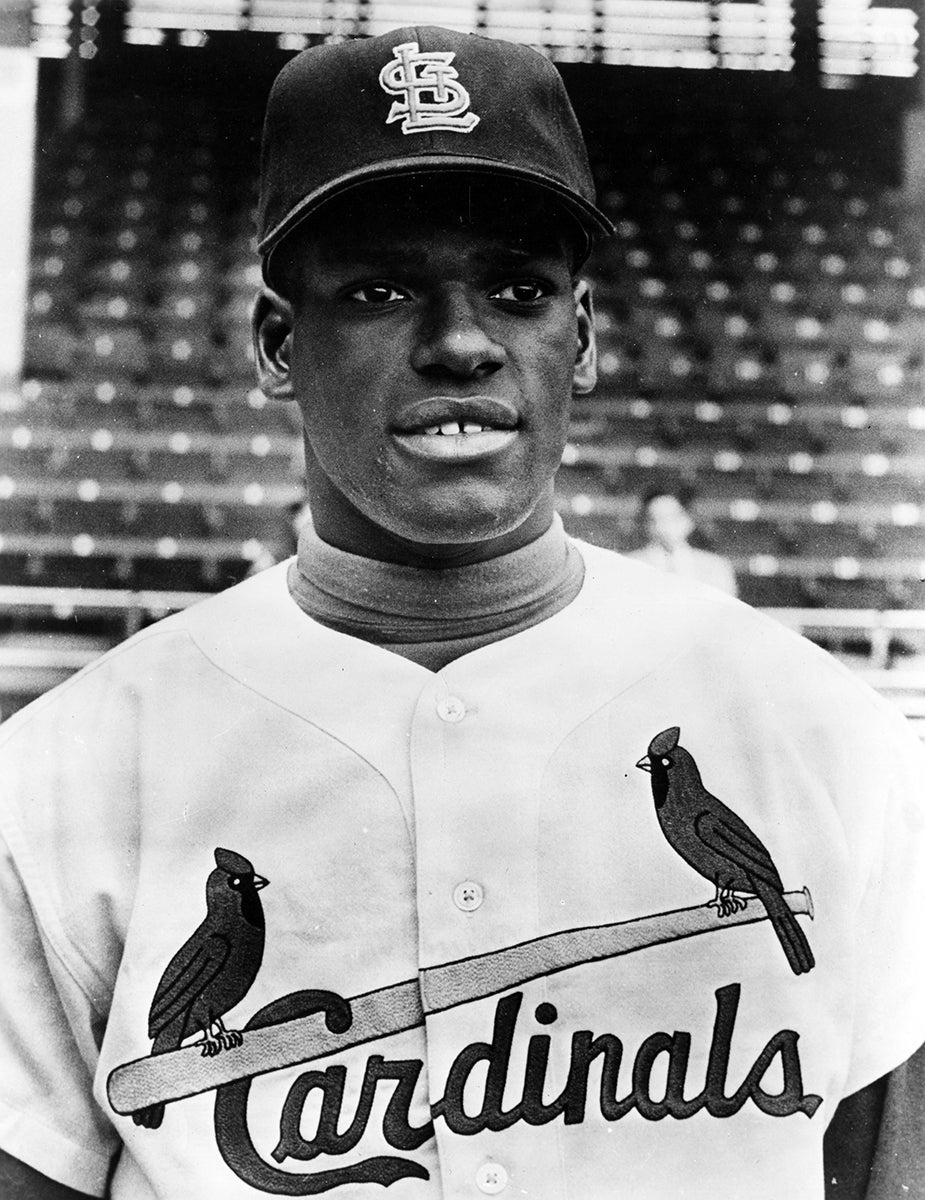
Santiago began the 1968 season in the rotation, threw shutouts in both his second and third starts and was 9-4 with a 2.18 ERA through June. But persistent elbow pain – diagnosed as tendinitis – forced him from his start on July 4 vs. Oakland after just 2.1 innings. Williams had just named Santiago to the AL All-Star Game roster, but his elbow was aching like never before. He returned July 18 vs. Minnesota but lasted just two innings before heading for the disabled list for the rest of the season.
“I’d rather take my time if it means I’ll be able to come back next year,” Santiago told the Boston Globe. “I don’t want to take any chances.”
But in Spring Training in 1969, Santiago tore ligaments in his elbow. He underwent surgery which he described to the Boston Globe as pinning the tendon, muscle and bone together with metal staples.
Many doubted that Santiago would ever pitch again, but he returned on Aug. 24 with a scoreless inning of relief against the White Sox, basking in a standing ovation from the 25,615 fans at Fenway Park.
“It made me feel good. It made me feel like a big shot,” Santiago told the Globe. “I was shaking going to the mound. I was afraid I was going to hit someone with a pitch.
“I still have a long way to go.”
Santiago’s worry about hitting a batter was not idle concern. On June 13, 1968, Santiago hit the Angels’ Paul Schaal in the head, fracturing his skull. Schaal recovered and played six more seasons in the big leagues after the injury. But by all accounts, Santiago was shaken by the incident.
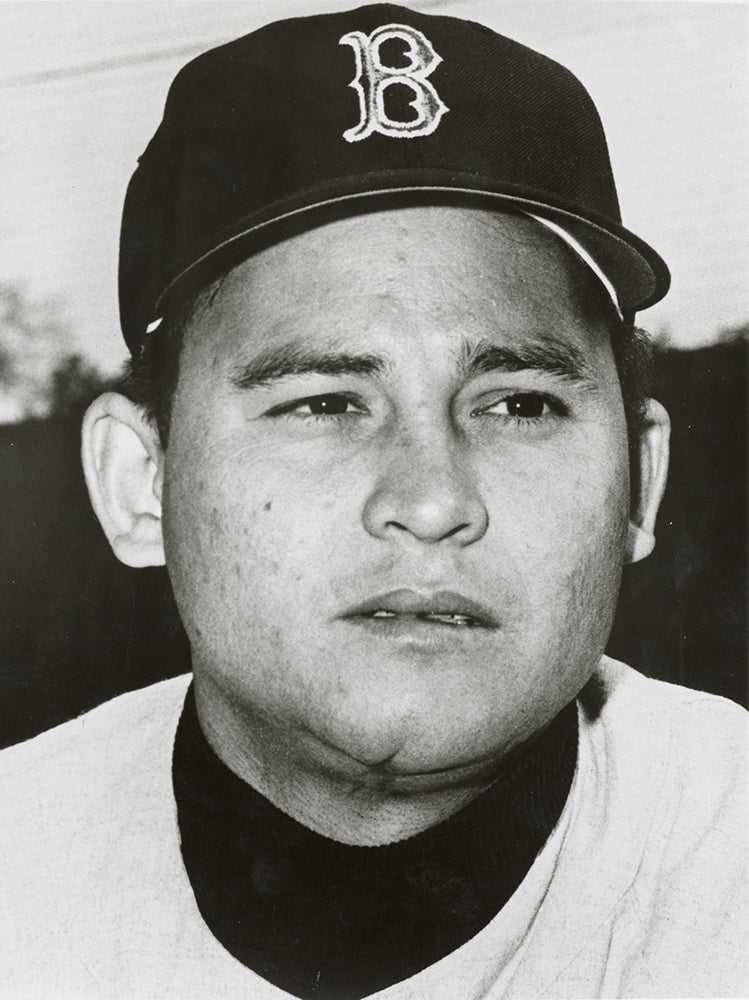
By the time Santiago returned to the mound in 1969 following his arm surgery, however, he could no longer generate top speed with his fastball or movement with his cutter. He finished the year with a 3.52 ERA in 10 relief appearances and then was unable to crack Boston’s Opening Day roster in 1970. He was sent to Triple-A Louisville, where he was 7-4 in 19 games while also making eight appearances for the Red Sox, going 0-2 with a 10.32 ERA.
He returned to Louisville in 1971, where he was 7-6 with a 4.08 ERA in 32 games – earning a spot in the International League All-Star Game in his last year in the Red Sox organization.
Santiago continued to pitch in the Puerto Rican Winter League and Mexican League before founding a baseball school, championing Little League organizations and broadcasting Puerto Rican league games. He managed the Class A Miami Marlins of the Florida State League in 1988. The Marlins were unaffiliated with any MLB team, playing as an independent squad that featured former big leaguers like Ed Lynch and Dave Von Ohlen.
His career in baseball spanned more than seven decades.
In his eight big league seasons, Santiago was 34-29 with a 3.74 ERA. But for Boston fans of the late 1960s, few Red Sox players were more memorable than the pitcher who saved the Impossible Dream season and helped ignite what has become one of the game’s most passionate fan bases.
“We’re the greatest!” United Press International reported Santiago yelling in the jubilant Red Sox clubhouse after the game the team clinched the 1967 pennant. “We’re the greatest!”
No Boston fan would argue differently.
Craig Muder is the director of communications for the National Baseball Hall of Fame and Museum
